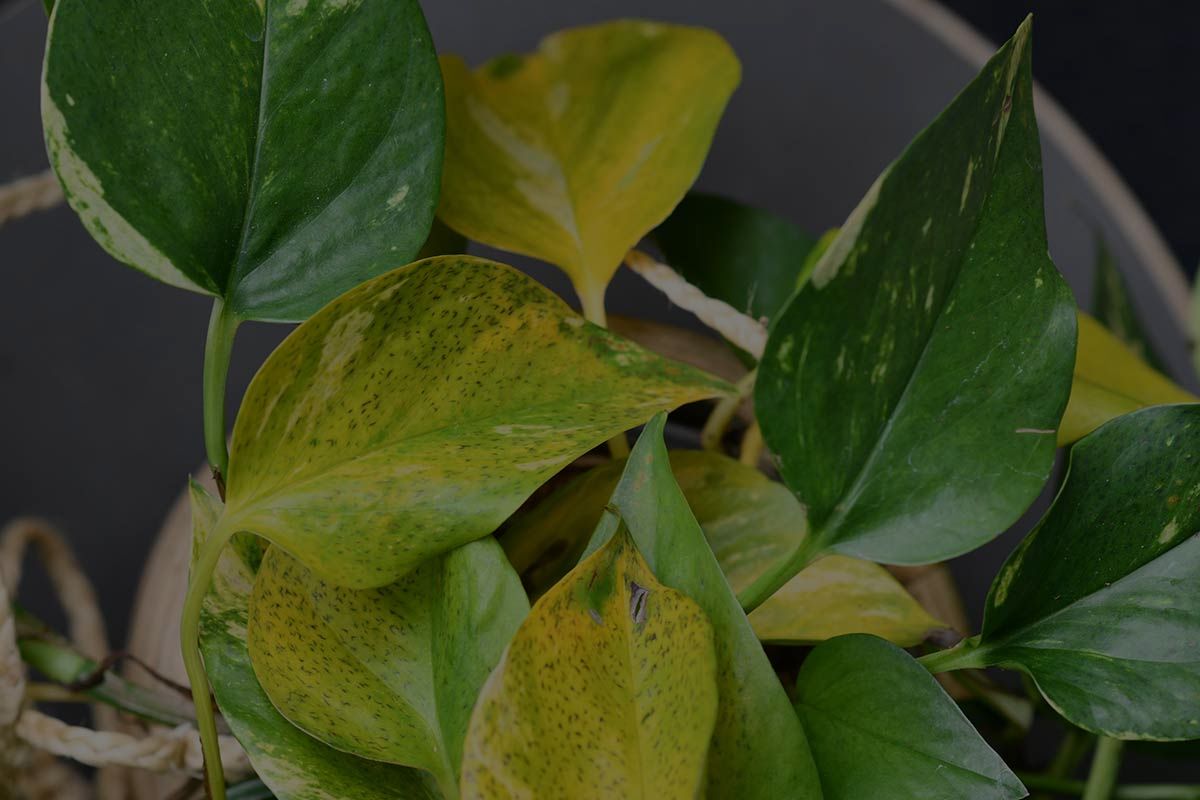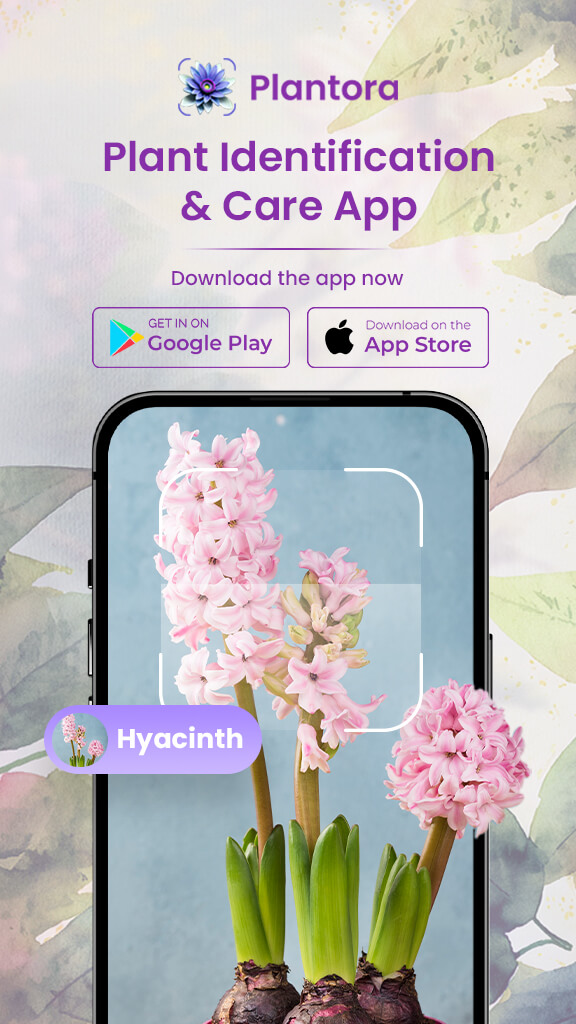
Plant leaves turning yellow can be a sign of various problems, as a plant can show similar signs of stress for a lot of issues. Therefore, to pinpoint the root cause is tricky and requires a thorough assessment. Check for the environment, the soil, and the plant care history to determine the cause for plant leaves turning yellow.
Yellowing of leaves is called chlorosis and affects the natural pigmentation of plants by interfering with chlorophyll, changing their color from natural green to yellow. This problem can ruin the overall appearance of the plant and can also harm its health.
A common problem with both indoor and outdoor plants, the leaves of any plant turning yellow is never a good sign. Even though it can be a sign of natural aging, it can often stress plant parents. Therefore, we bring this guide to help you understand why the leaves of your plants are turning yellow and how you can fix that.
Different Types of Yellowing on the Plant
Before we dive into the causes, we need to understand the symptoms. Yellowing of leaves may look the same, but there are subtle differences that can help you understand the cause of a particular problem. Here are some common symptoms among plants associated with plant leaves turning yellow.
Yellowing with Droopy and Curly Leaves
If you notice yellowing leaves that are also curling upward, that is usually a sign of underwatering. The leaves curl upwards to retain moisture. In such conditions, you might also see the browning and falling of older leaves as plants try to conserve their energy by shedding older leaves.
Similarly, plant leaves turning yellow and curling downward is a sign of overwatering, along with other symptoms.
Yellowing with Mushy Stems
It is being overwatered if your plant leaves are turning yellow with mushy stems. You might also notice stems getting dark from the base, which is a sign of fungus gnats. Moreover, consistently moist soil also causes yellow leaves and mushy stems.
Yellow Spots and Deformed Leaves
Sporadic yellow spots and leaf deformity are caused by pests or fungal/bacterial plant diseases. Check for any signs of pests; if there are no signs, then these symptoms are likely due to a disease. These fungal or bacterial diseases thrive in warm and humid conditions. Such conditions arise due to overwatering and a lack of airflow.
The Whole Plant is Yellowing
If your whole plant is slowly turning yellow, it could be due to either nutrient deficiency or pot-bound roots. Check for bounded roots and repot the plant to a new and bigger pot with fresh potting soil. Moreover, check for soil nutrients and replenish them with suitable fertilizers for your plants.
Causes for Plant Leaves Turning Yellow
There are various reasons why plant leaves start turning yellow. Yellow leaves are never a good sign and indicate something is wrong with the plant’s health. Here are some causes for plant leaves turning yellow and how you can fix them –
1. Lack of Water

Underwatering is one of the main causes for plant leaves turning yellow. Lack of water can cause additional problems such as leaf curling, wilting, and stunted growth. Check for such signs and dry soil. Moreover, keep a strict schedule of watering. A few hot days without watering can easily cause yellowing of leaves.
Solution – If your plant is suffering from a lack of water, slowly start watering it and gradually increase the amount of water. Follow a strict watering schedule and research about the watering need of your plant.
2. Lack of Light

Insufficient light can also affect the chlorophyll level in your plant, causing the leaves to turn yellow. Light is one of the main sources of plant nourishment, and its deficiency will make plants look faded and dull. This problem is more common with indoor plants. Plants have different light needs, from full sun to partial and full shade.
Solution – For indoor plants, the solution is to move them to brighter locations. Moreover, research about the light needs of your plants and shift them to a place where they can receive enough sunlight for optimal growth.
3. Lack of Nutrients

Yellowing leaves can be a sign of deficiency of various nutrients such as iron, magnesium, zinc, nitrogen, etc. Lack of these nutrients can cause symptoms such as interveinal chlorosis. Therefore, make sure to check the nutrient level of the soil.
Solution – Do a soil test to determine which nutrients are missing and use an appropriate fertilizer to replenish the nutrients in the soil.
4. Overwatering

Too much water can also cause problems such as yellowing leaves, mushy stems, drooping, leaf curl, and root rot. This problem is also more common in indoor plants, as these plants don’t like to sit in water. Moreover, poor drainage can cause water to sit in the soil.
Solution – Use well-draining soil and follow a proper watering method that uses less amount of water and ensures deep watering.
Learn – How To Water Indoor Plants?
5. Fertilizer Damage

Excess fertilizer use can also cause plant leaves to turn yellow. Fertilizers are made up of chemicals, and their excess usage can cause plant leaves to look burnt or scorched. Some plants might be sensitive to fertilizers and require fewer nutrients. Moreover, fertilizer salts also draw moisture from the soil, which causes yellowing.
Solution – Check for signs such as salt accumulation, which indicates excess fertilizer usage. Reduce fertilizer use and rinse the soil to remove excess fertilizer. Check the nutrient levels in soil before fertilizing.
Learn – How To Fertilize Plants?
6. Soil pH

Usually, high pH levels cause iron to be less soluble and lead to yellow leaves. Alkaline soil with pH above 7 can be harmful for plants with higher iron needs. Soil pH is an important factor for healthy plant growth, and therefore should be checked.
Solution – Conduct a soil pH test and use sulfur to lower the soil pH. Research the pH requirements of your plants and use a suitable soil mix for them.
7. Plant Diseases

Various fungal and bacterial diseases can cause yellowing, yellow spots, and deformity in plants. A variety of plants, including fruiting plants, are susceptible to many plant diseases such as early blight, fusarium wilt, and more. Each disease has different symptoms which can be tough to identify.
Solution – Use the Symptom Checker feature of the Plantora App to identify various diseases and plant problems before its too late. As there is not much you can do except getting rid of your plants once they are infected.
8. Pest Damage

Plant pests such as aphids, mealybugs, spider mites, etc, can damage the plant and make them weak by sucking out the nutrients. These pests make plants vulnerable to various diseases. You can prevent them by growing resistant varities or bug-repellent plants.
Solution – Regularly monitor your plants for any sign of pest infestation and use neem oil or insecticides to get rid of them. Isolate infected plants from other plants until they get better.
9. Chemical Damage

Chemicals such as pesticides and herbicides have similar effects to excess fertilizer usage. These chemicals should be used in a safe amount and method, as they can also ruin the soil health, making it unsuitable for plant growth.
Solution – Prevention and careful usage is the only solution for this problem as there is cure for yellow plant leaves caused by chemical damage.
10. Natural Aging

Plant leaves turning yellow can be a sign of natural aging, as plants get older, they become weak and take up less nutrients. If your plants have a few older yellow leaves near the base, there is nothing to worry about as it is a natural process. You can manually remove such older and yellow leaves to promote healthier and fresher growth.
Conclusion
Plant leaves turning yellow is a common plant problem that can be caused by various factors. It is better to learn about the causes and solutions to take better care of your plants. Most of these problems can be easily prevented by performing the right plant care. Research thoroughly about your plant’s needs and try to provide them with the right care to ensure that no such problems harm the health of your plants. Download the Plantora App to learn more about plant care and how you can identify and treat various plant problems.
Raghav is a talented content writer with a passion to create informative and interesting articles. With a degree in English Literature, Raghav possesses an inquisitive mind and a thirst for learning. Raghav is a fact enthusiast who loves to unearth fascinating facts from a wide range of subjects. He firmly believes that learning is a lifelong journey and he is constantly seeking opportunities to increase his knowledge and discover new facts. So make sure to check out Raghav’s work for a wonderful reading.





